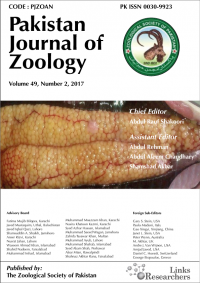Breeding Bird Assemblages in Relation to Changing Forest Composition in North-Eastern Algeria: Zonation or Continuum?
Breeding Bird Assemblages in Relation to Changing Forest Composition in North-Eastern Algeria: Zonation or Continuum?
Ahmed Guerfi1, Mohcen Menaa2*, Kaouther Guellati2, Lamia Boutabia1,
Salah Telailia1, Moussa Houhamdi3, Rafik Boukhris1 and Mohamed Cherif Maazi2
ABSTRACT
Forest areas of Mechroha municipality are among the most dynamic and rich ecosystems in Souk Ahras region. These complex landscapes are typically considered vulnerable by intensive land use and human activities, which related to: illegal cuttings, overgrazing, and other anthropological impacts. Protecting and helping the rehabilitation of forest areas are essential for sustaining the integrity of these forest habitats. In this study, non-parametric multivariate methods were used to understand how a particular bird species responds to a particular forest habitat. We have conducted the first bird survey in Ouled Bechih forest of Mechroha municipality using the point count method across the three oak forest types (cork oak stands, mixed oak forests and zeen oak stands). A total of 62 species were observed among which 20 protected species, only one vulnerable species, and 12 endemic species to the Maghreb and/or to North Africa. The bird assemblages of the forest of Ouled Bechih varied significantly between the different forest habitats, as well as the differences in bird species assemblages among the possible pairwise combinations in the three forest habitats were significant only between zeen oak stands and cork oak stands. The main discriminant species that contributed significantly to the dissimilarity between cork oak stands and oak mixed forests were Sardinian warbler, common cuckoo, great spotted woodpecker and European serin. The differences between zeen oak and cork oak woodlands were produced mainly by African Blue Tit, Atlas Pied Flycatcher, common wood pigeon and woodlark. The dissimilarity showed between zeen oak stands and oak mixed forests are the results from Western Bonelli’s Warbler, common cuckoo and common wood pigeon presence.
To share on other social networks, click on any share button. What are these?










